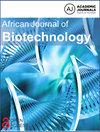Investigation of the anti-bacterial properties of mangrove fern, Acrostichum aureum in the Niger Delta, Nigeria
引用次数: 4
Abstract
Mangroves render several ecosystem services globally, one of which is pharmacological products. This study was done to verify whether Acrostichum aureum, a species of mangrove, common in the Niger Delta has anti-bacterial property. Several leaf samples were plucked from the trees at Eagle Island and placed in a cooler and sent to the lab for further analysis. The leaves were dried and ground into fine powder with manual grinding machine and 100 g of the powdered sample was measured and placed in 1000 ml of each of the extraction solvents (hot water and methanol). Five different concentrations (32.25 mg/ml, 65.5 mg/ml, 125 mg/l, 250 mg/l and 500 mg/l) were made from each of the extracts using dimethyl sulfoxide (DMSO). Furthermore, bacterial species (Escherichia coli, Salmonella paratyphi, Staphylococcus aureus, and Pseudomonas aeruginosa) were isolated and a stock of each sample was made in agar slant and stored in the refrigerator at 4°C. Mueller Hinton Sensitivity Agar (MHA) medium was prepared in agar and triplicate discs of each of the concentrations made from the two extracts were placed on the medium (MHA). The zone of inhibition in diameter in all plates was measured and analyzed statistically using R statistics. The result revealed that there is a significant difference in the growth of the microbes on the different concentrations of A. aureum (F4, 100 = 4.02, P = 0.01). A. aureum had higher effect on E. coli and S. aureus. Similarly, the higher the concentrations of the extracts the more effective it is in controlling the bacteria. Finally, the study revealed that A. aureum has antibacterial properties that can be employed in drug production to treat common diseases prevalent in the region. Key words: Antibiotics, bacteria, Niger Delta, mangrove, microbial species, medicinal products.尼日利亚尼日尔三角洲红树蕨的抗菌特性研究
红树林在全球范围内提供多种生态系统服务,其中一种是药理产品。本研究旨在验证尼日尔三角洲常见的红树林Acrostichum aurum是否具有抗菌特性。从鹰岛的树上摘下几片叶子样本,放入冷却器中,送往实验室进行进一步分析。将叶子干燥并用手动研磨机研磨成细粉末,测量100g粉末状样品并将其置于1000ml每种提取溶剂(热水和甲醇)中。使用二甲基亚砜(DMSO)从每种提取物中制备五种不同浓度(32.25mg/ml、65.5mg/ml、125mg/l、250mg/l和500mg/l)。此外,分离细菌种类(大肠杆菌、副伤寒沙门氏菌、金黄色葡萄球菌和铜绿假单胞菌),并在琼脂斜面中制备每个样品的储备,并在4°C下储存在冰箱中。在琼脂中制备Mueller-Hinton敏感琼脂(MHA)培养基,并将由两种提取物制备的每种浓度的一式三份的圆盘放置在培养基(MHA)上。测量所有平板中直径的抑制区,并使用R统计进行统计学分析。结果表明,不同浓度的金黄色葡萄球菌对微生物的生长有显著差异(F4100=4.02,P=0.01)。类似地,提取物的浓度越高,它在控制细菌方面就越有效。最后,研究表明,金黄色葡萄球菌具有抗菌特性,可用于药物生产,以治疗该地区流行的常见疾病。关键词:抗生素,细菌,尼日尔三角洲,红树林,微生物种类,医药产品。
本文章由计算机程序翻译,如有差异,请以英文原文为准。
求助全文
约1分钟内获得全文
求助全文

 求助内容:
求助内容: 应助结果提醒方式:
应助结果提醒方式:


